105 Delhi Rd, North Ryde
NSW 2113
Cutting-edge instruments and software for telescopes
AAO-Macquarie has a long history of building astronomical optic instruments and software both in Australia and around the world.
Our major completed projects include:
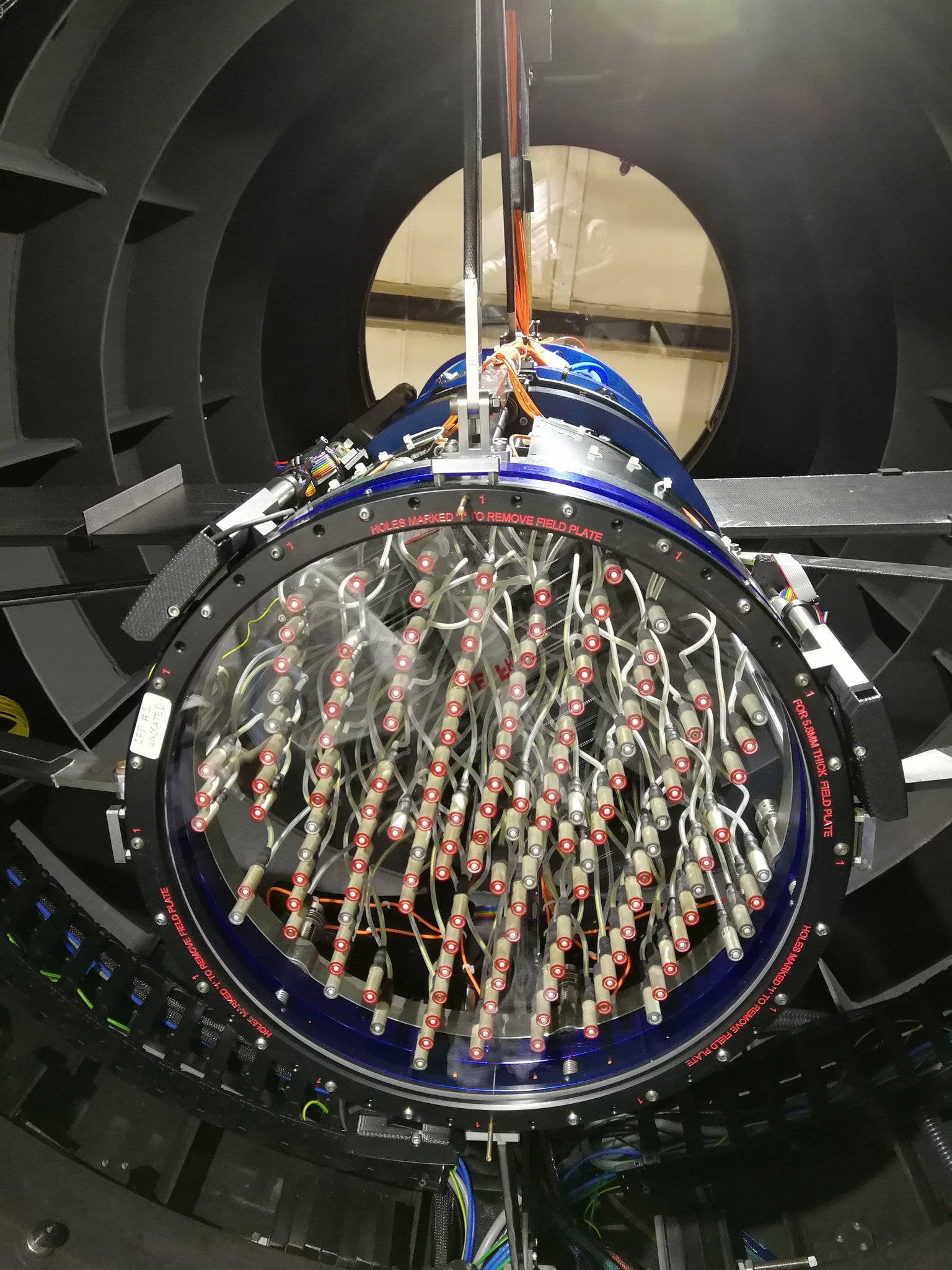 TAIPAN is a spectroscopic instrument that incorporates 150 optical fibres within individual Starbug robots that position across the 6 degree field-of-view of the UK Schmidt Telescope (UKST).
TAIPAN is a spectroscopic instrument that incorporates 150 optical fibres within individual Starbug robots that position across the 6 degree field-of-view of the UK Schmidt Telescope (UKST).
In addition to the positioning system prototype for MANIFEST, the TAIPAN project includes a new spectrograph (an all-refractive 2-arm design that delivers a spectral resolution of R>2000 over the wavelength range 370-870 nm) and an upgrade to the UKST systems (telescope drive motors and encoders, hardware and software control systems, and dome drive and shutter control systems).
The TAIPAN instrument has two key aims. This first aim is to act as a proof-of-concept for the Starbugs positioning technology for use on the Giant Magellan Telescope. The second aim for TAIPAN is to deliver a capability to Australian astronomers to carry out a comprehensive spectroscopic galaxy survey of the Southern Hemisphere.
Credit: AAO/Anthony Horton
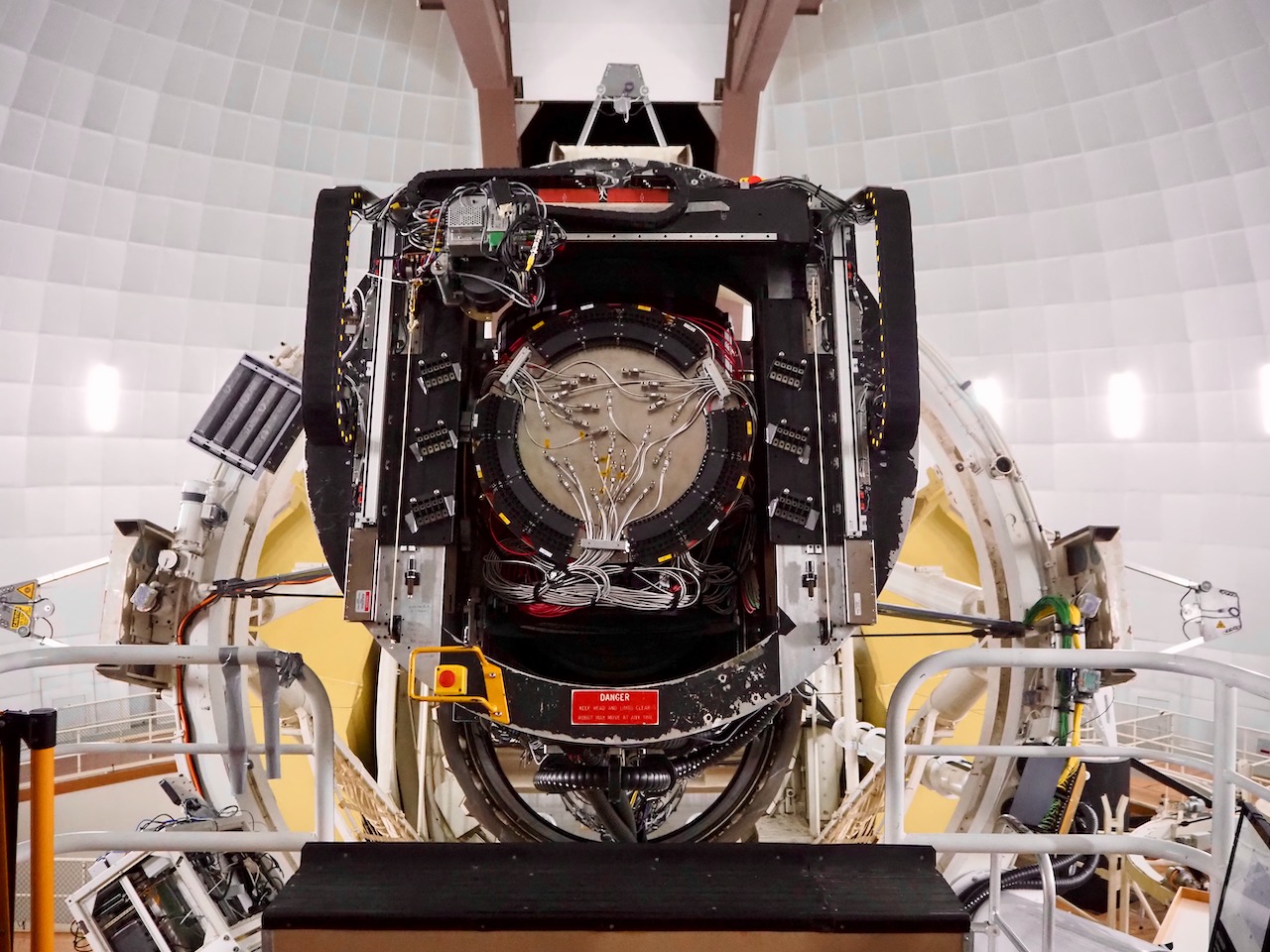 Hector is a multi-hexabundle IFU fibre system and spectrograph for the AAT. It incorporates a new positioning system using the 2df corrector. This instrument concept builds on the success of the SAMI instrument which completed a large spatially resolved galaxy survey from 2013-2019.
Hector is a multi-hexabundle IFU fibre system and spectrograph for the AAT. It incorporates a new positioning system using the 2df corrector. This instrument concept builds on the success of the SAMI instrument which completed a large spatially resolved galaxy survey from 2013-2019.
The Hector concept was selected by the Australian astronomical community as one of two key new facilities for the AAT.The overall Hector project is led from AAO-USyd, who are also responsible for the hexabundles, the fibre cable, and the (plug-plate) positioning robot. AAO-Macquarie is responsible for the design and construction of the spectrograph and the telescope interfaces.
Credit: USYD/Julia Bryant
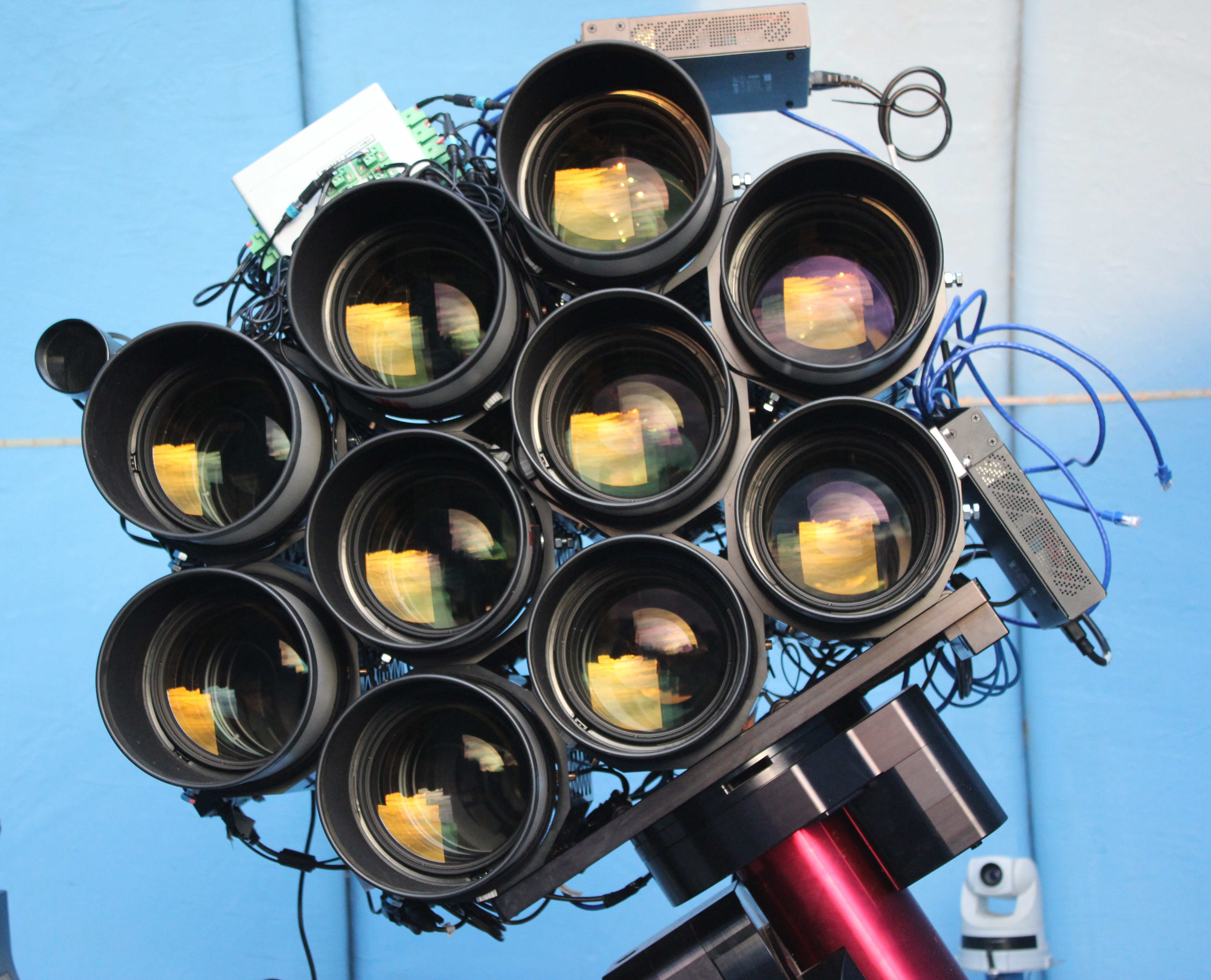 The Huntsman Telescope is an AAO Macquarie and Macquarie Department of Physics and Astronomy joint project to take images of faint galaxy structures using commercial off-the-shelf optics.
The Huntsman Telescope is an AAO Macquarie and Macquarie Department of Physics and Astronomy joint project to take images of faint galaxy structures using commercial off-the-shelf optics.
This cost-effective telescope consists of an array of DLSR camera lenses and commercial CCD cameras on a standard telescope mount. It is situating in its own dome at Siding Spring Observatory and is designed to be completely autonomous in normal operation.
The AAO's contribution is primarily the selection of hardware and development of the automated control software, as well as assembly, integration and testing.
Credit: AAO/Sarah Caddy
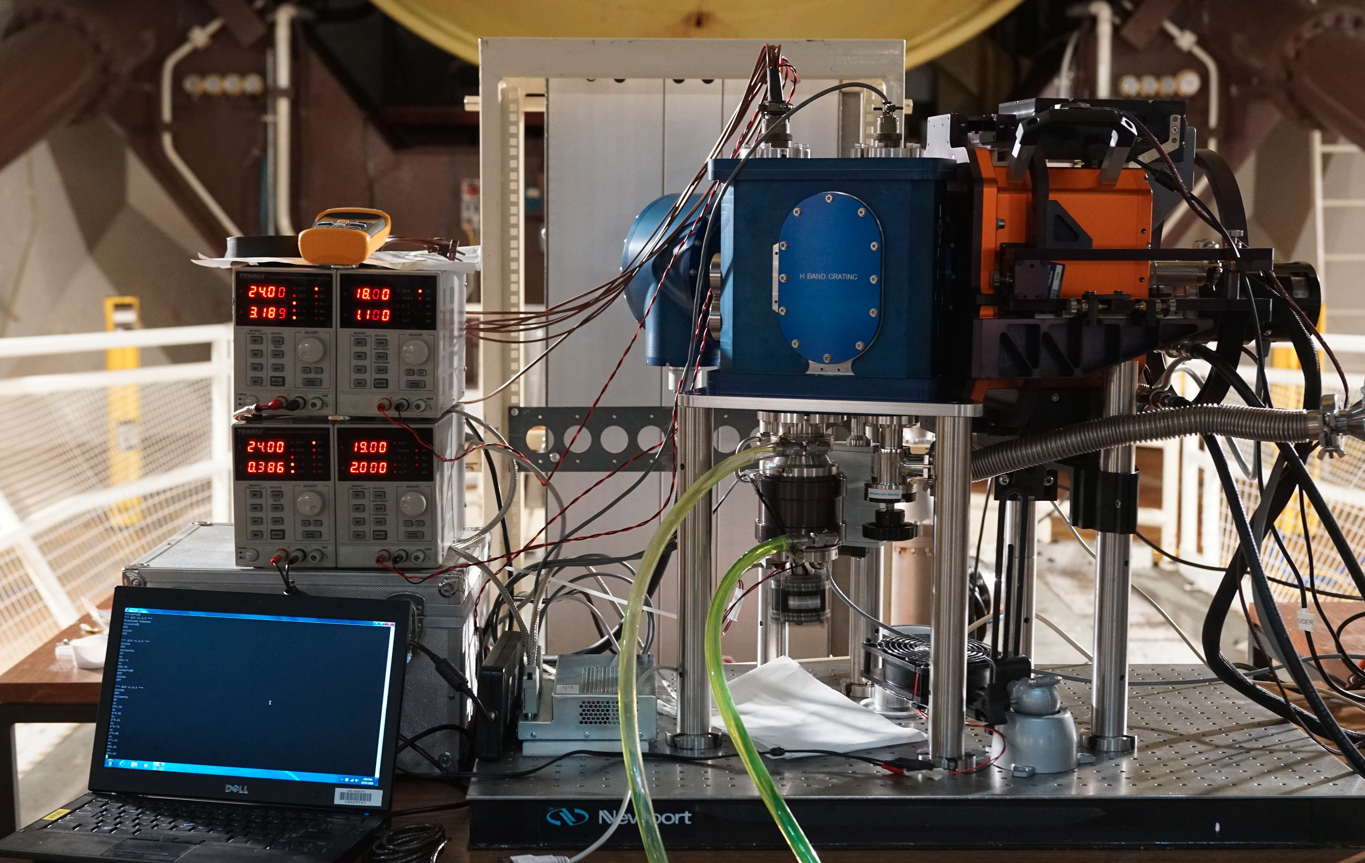
To achieve this, we designed and built a dedicated high-throughput low-noise H-band spectrograph and associated fibre feed and telescope fore-optics unit, in close collaboration with the University of Sydney and the Astrophysical Institute Potsdam.
For atmospheric line filtering, the instrument employs the GNOSIS FBG fibre bundle. PRAXIS was tested on the AAT during a number of commissioning runs in 2019.
Completed in 2018.
Credit: AAO/Anthony Horton
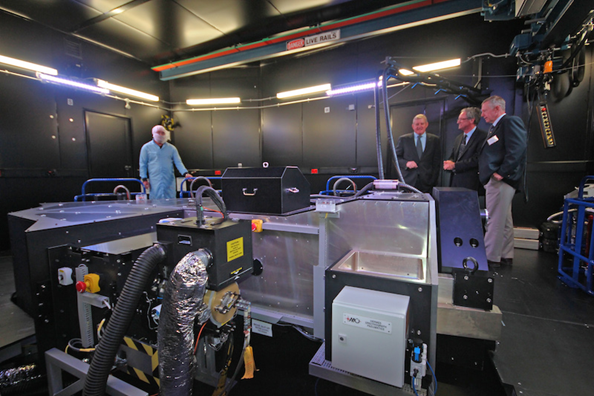 HERMES is a multi-object spectrograph commissioned at the AAT in 2014 that covers four optical bands simultaneously at a spectral resolution of ~28,000. The HERMES instrument is driven primary by the ‘Galactic Archaeology’ science project, which aims to reconstruct the history of our Galaxy’s formation from precise multi-element abundances of 1 million stars. The HERMES spectrograph is fed by 396 fibres from AAT’s existing Two-Degree Field (2dF) optical fibre positioner.
HERMES is a multi-object spectrograph commissioned at the AAT in 2014 that covers four optical bands simultaneously at a spectral resolution of ~28,000. The HERMES instrument is driven primary by the ‘Galactic Archaeology’ science project, which aims to reconstruct the history of our Galaxy’s formation from precise multi-element abundances of 1 million stars. The HERMES spectrograph is fed by 396 fibres from AAT’s existing Two-Degree Field (2dF) optical fibre positioner.
Completed in 2014.
Credit: AAO/Angel Rafael Lopez Sanchez
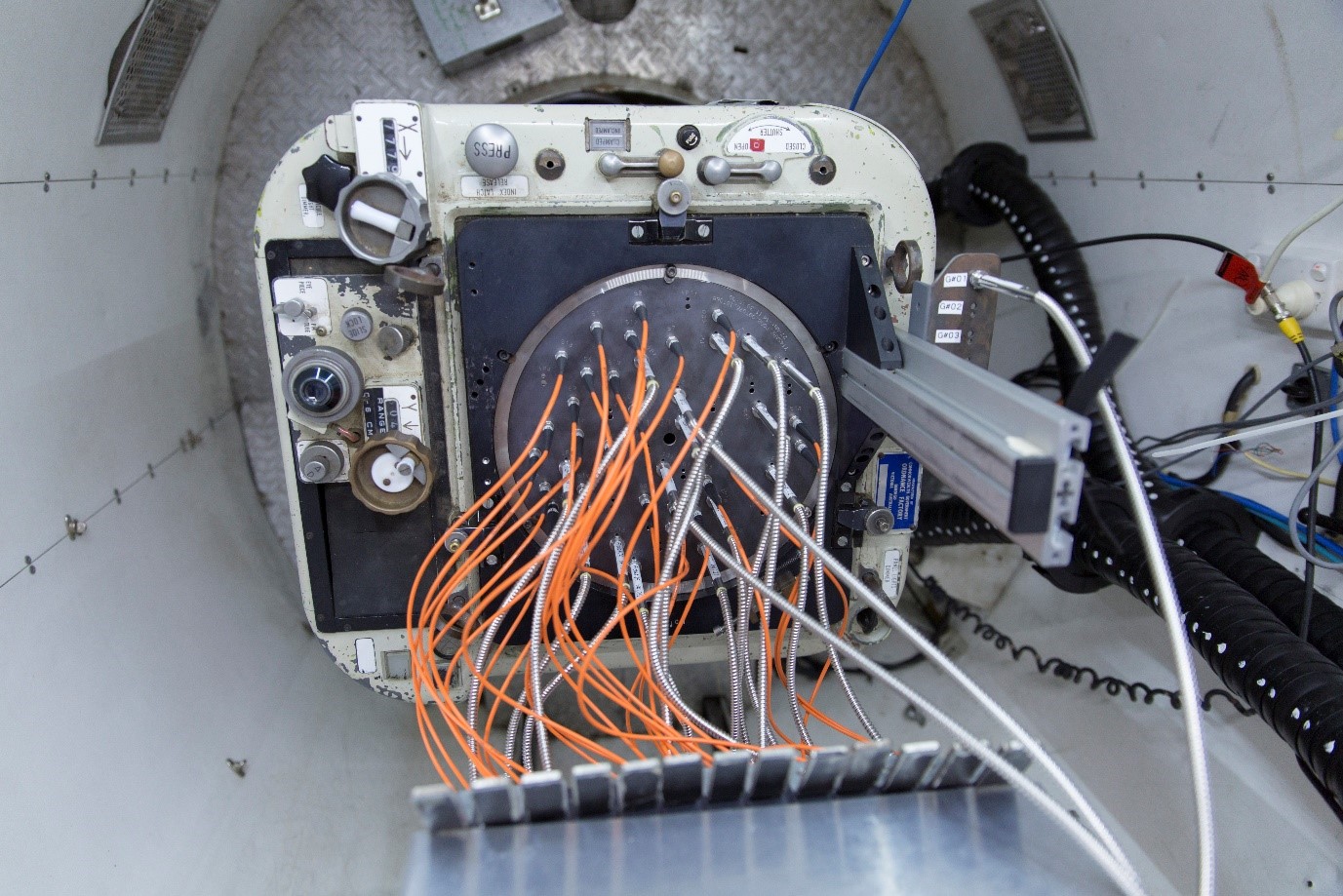 The Sydney-AAO Multi-Object Integral-Field Spectrograph (SAMI) Galaxy Survey began in March 2013 and observed 3,000 galaxies across a large range of environments.
The Sydney-AAO Multi-Object Integral-Field Spectrograph (SAMI) Galaxy Survey began in March 2013 and observed 3,000 galaxies across a large range of environments.
SAMI uses plate-plugged optical fibre integral field units (IFUs) that feed the AAOmega spectrograph to collect data of 12 galaxies simultaneously. Each of the IFUs are fused fibre bundles called “hexabundles.” Each hexabundle has 61 individual fibres which can each collect a unique spectrum from different parts across the galaxy. Collecting data in this way allowed SAMI to collect an order of magnitude larger sample of spatially resolved galaxies than previously existed.
Completed in 2013.
Credit: AAO/Angel Rafael Lopez Sanchez
Echidna is a fibre positioning robot installed on the Subaru telescope that feeds dual near-infrared spectrographs. The overall system includes a corrector and imager is known as FMOS (Fibre Multi-Object Spectroscopy). Echidna uses piezo-electric actuators to position a total of 400 fibre-spines at the telescope focal plane. Positioning occurs in parallel with a field configuration time of ~12 minutes.
Completed in 2007.
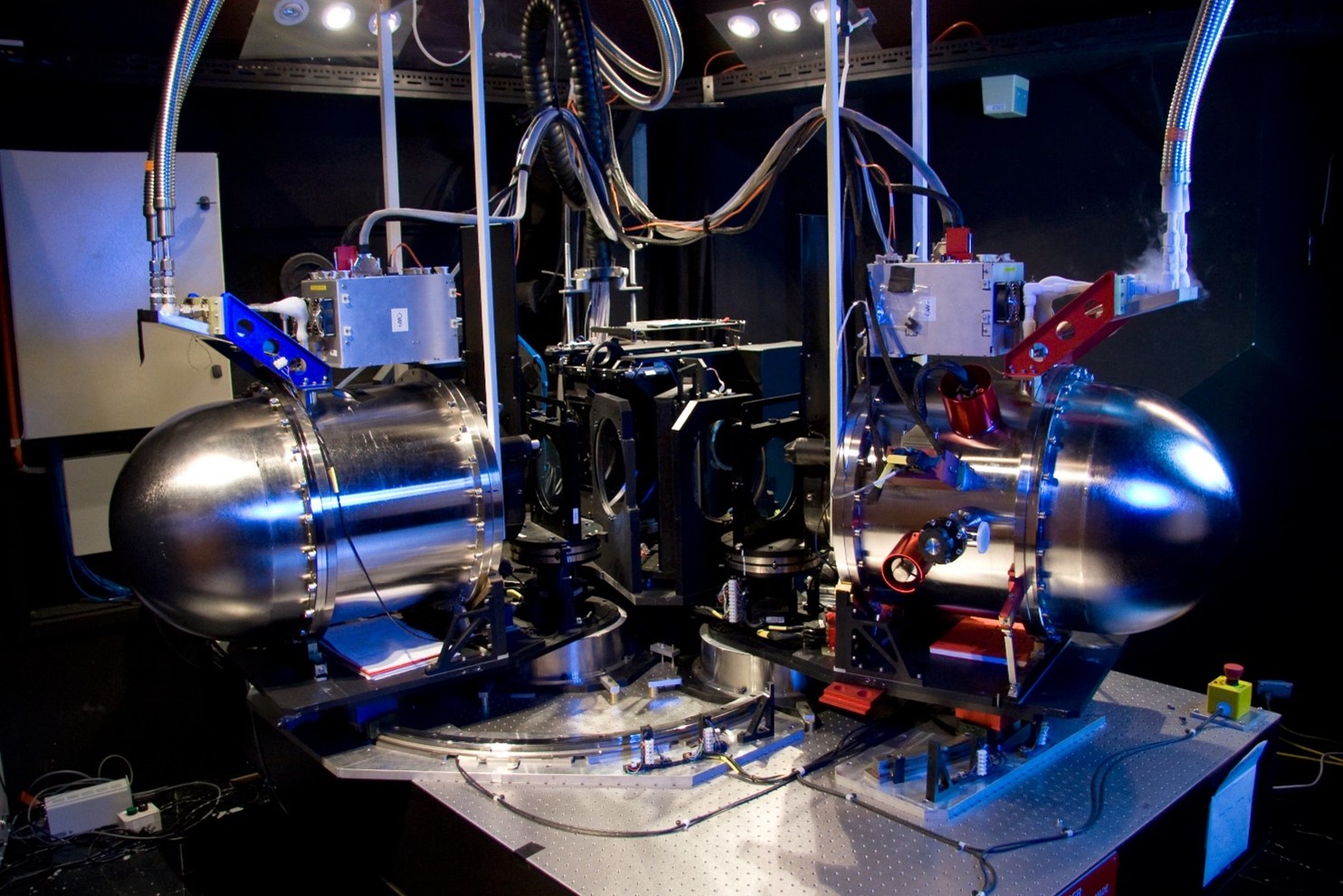 AAOmega, commissioned in 2006 and upgraded in 2014, is a general-purpose facility providing multi-object and integral field spectroscopy at the AAT. This dual beam bench mounted multiple-object spectrograph is fed by ~400 fibres from 2dF providing spectral resolutions ranging from 1,200 to 10,000 with a variety of VPH gratings.
AAOmega, commissioned in 2006 and upgraded in 2014, is a general-purpose facility providing multi-object and integral field spectroscopy at the AAT. This dual beam bench mounted multiple-object spectrograph is fed by ~400 fibres from 2dF providing spectral resolutions ranging from 1,200 to 10,000 with a variety of VPH gratings.
The AAOmega spectrograph can be fed by several front-ends, either the Two Degree Field (“2dF”) multi-object system, the KOALA integral field unit, or the SAMI multi-IFU system.
Completed in 2006.
Credit: AAO/Angel Rafael Lopez Sanchez
VELOCE is a high spectral resolution, high stability, fibre-fed spectrograph installed at the AAT, with key science goals to obtain Doppler velocities for Sun-like and M-dwarf stars at sub-m/s precision.
AAO-MQ designed and manufactured the fibre feed for the VELOCE instrument, with the spectrograph design and built by AAO-Stromlo The fibre feed consists of a precision dual microlens-array IFU implementing octagonal core fibre for improved modal noise performance, feeding a dual microlens-array pseudo slit into the spectrograph. This slit incorporates a photonic crystal fibre (PCF) illuminated with a laser comb from Menlo providing high precision and stability.
OzPoz is the multi-fiber positioner feeding the spectrographs GIRAFFE and UVES from a Nasmyth focus of on of the VLT Unit Telescopes. Together with GIRAFFE and UVES, it forms the FLAMES facility. FLAMES has been available for observing since successful completion of its science verification in 2003.
Since commissioning there have been no major instrument refurbishments or major technical issues. OzPoz is one of the most reliable instruments in terms of instrument downtime that ESO currently has on any of the VLTs.
Completed in 2003.
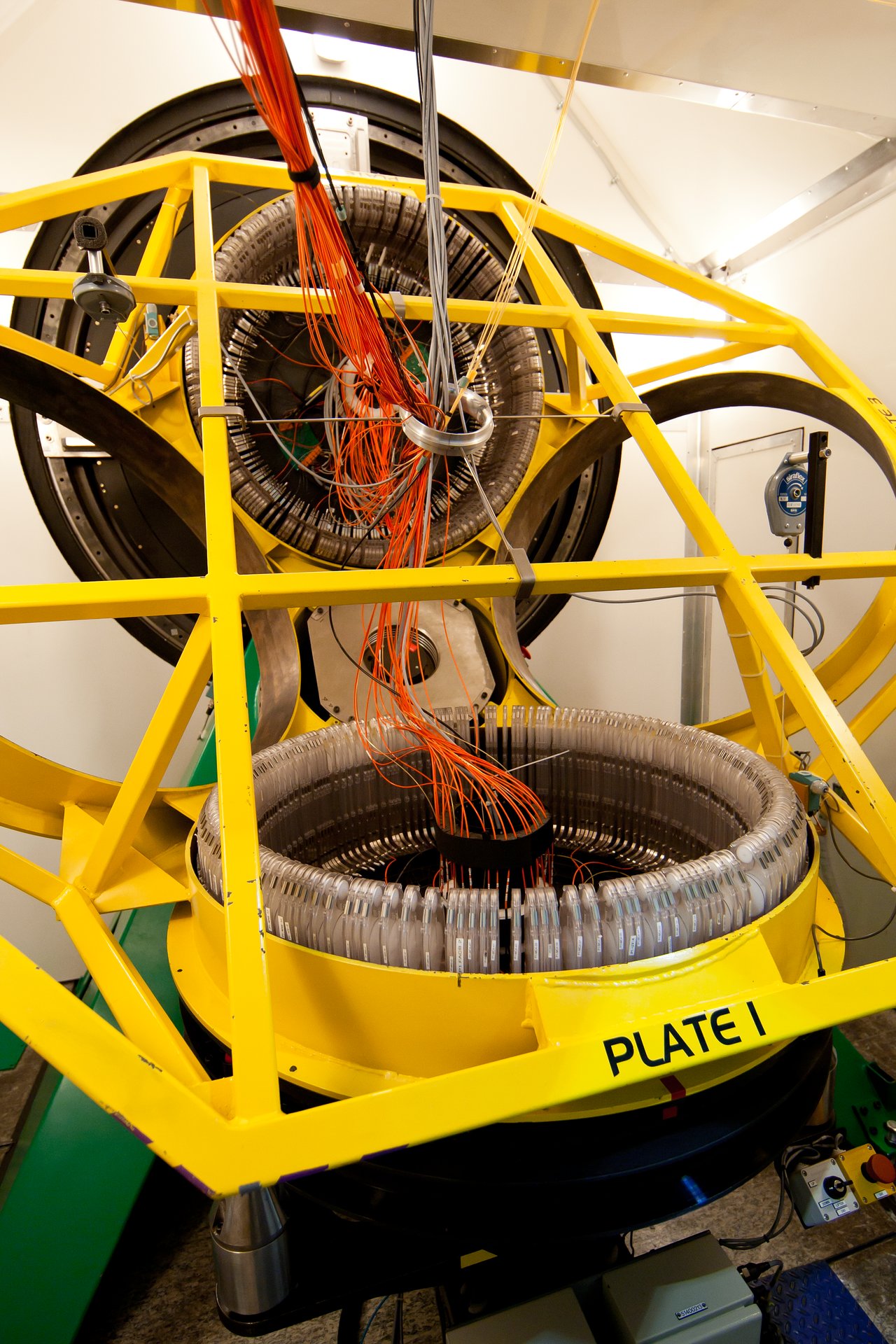
Credit: ESO